CHAPTER 8: GROWTH AND TRANSFORMATION
He made the issue the keynote of his sistence to commercial agriculture .
campaign for reelection, but Repub- Between 1860 and 1910, the number
lican candidate Benjamin Harrison, of farms in the United States tripled,
a defender of protectionism, won in increasing from two mil ion to six
a close race . In 1890, the Harrison mil ion, while the area farmed more
administration, fulfilling its cam- than doubled from 160 mil ion to 352
paign promises, achieved passage of mil ion hectares .
the McKinley tariff, which increased
Between 1860 and 1890, the pro-
the already high rates . Blamed for duction of such basic commodities
high retail prices, the McKinley du- as wheat, corn, and cotton out-
ties triggered widespread dissatisfac- stripped all previous figures in the
tion, led to Republican losses in the United States . In the same period,
1890 elections, and paved the way for the nation’s population more than
Cleveland’s return to the presidency doubled, with the largest growth in
in the 1892 election .
the cities . But the American farmer
During this period, public an- grew enough grain and cotton,
tipathy toward the trusts increased . raised enough beef and pork, and
The nation’s gigantic corpora- clipped enough wool not only to
tions were subjected to bitter attack supply American workers and their
through the 1880s by reformers such families but also to create ever-in-
as Henry George and Edward Bel- creasing surpluses .
lamy . The Sherman Antitrust Act,
Several factors accounted for this
passed in 1890, forbade all combina- extraordinary achievement . One was
tions in restraint of interstate trade the expansion into the West . Anoth-
and provided several methods of er was a technological revolution .
enforcement with severe penalties . The farmer of 1800, using a hand
Couched in vague generalities, the sickle, could hope to cut a fifth of
law accomplished little immediately a hectare of wheat a day . With the
after its passage . But a decade later, cradle, 30 years later, he might cut
President Theodore Roosevelt would four-fifths . In 1840 Cyrus McCor-
use it vigorously .
mick performed a miracle by cutting
from two to two-and-a-half hectares
REVOLUTION IN
a day with the reaper, a machine he
AGRICULTURE
had been developing for nearly 10
D
years . He headed west to the young
espite the great gains in industry, prairie town of Chicago, where he
agriculture remained the nation’s set up a factory — and by 1860 sold a
basic occupation . The revolution quarter of a million reapers .
in agriculture — paral eling that in
Other farm machines were de-
manufacturing after the Civil War veloped in rapid succession: the
— involved a shift from hand labor automatic wire binder, the threshing
to machine farming, and from sub-
(Continued on page 177.)
160
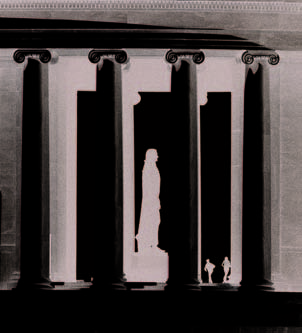
The silhouette of one of the United States’ most revered Founding Fathers,
Thomas Jefferson, stands in the shrine dedicated to his memory.
“I have sworn upon the altar of God, eternal hostility against
every form of tyranny over the mind of man.”
M O N U M E N T S A N D
MEMA POICTUR
R E P R OIA
F I L E
LS
The monuments of American history span a continent in distance and
centuries in time. They range from a massive serpent-shaped mound
created by a long-gone Native-American culture to memorials in
contemporary Washington, D.C., and New York City.
161
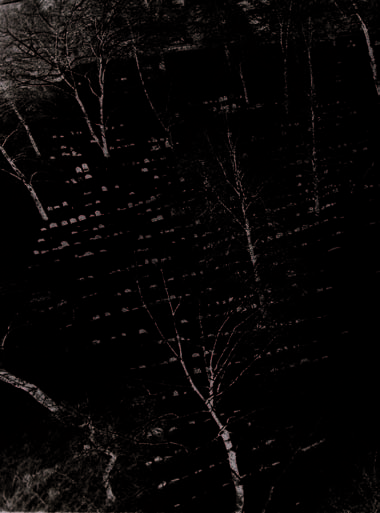
The snow-covered Old Granary cemetery in Boston, Massachusetts, is burial ground for, among other leading American patriots, victims of the Boston Massacre, three signers of the Declaration of Independence, and six governors of Massachusetts. Originally founded by religious dissidents from England known as Puritans, Massachusetts was a leader in the struggle for independence against England. It was the setting for the Boston Tea Party and the first battles of the American Revolution — in Lexington and Concord.
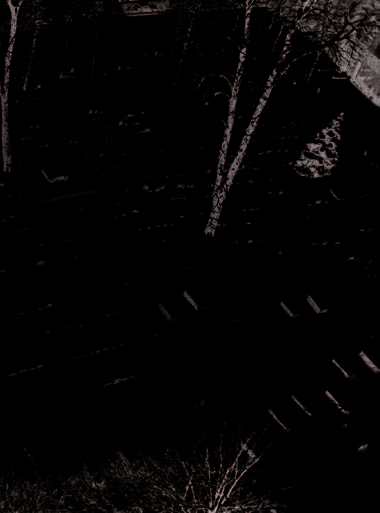
163
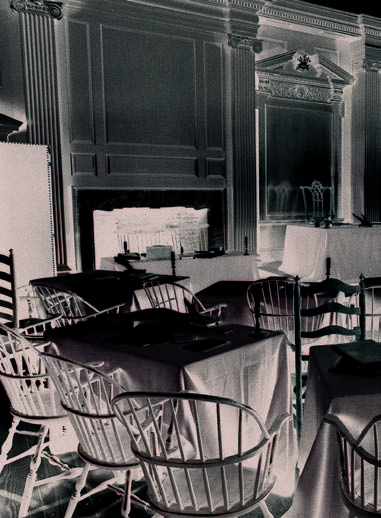
The historic room in Independence Hall, Philadelphia, where delegates drafted
the Constitution of the United States in the summer of 1787. The Constitution is the supreme law of the land. It prescribes the form and authority of the federal government, and ensures the fundamental freedoms and rights of the citizens of the country through the Bill of Rights.

165
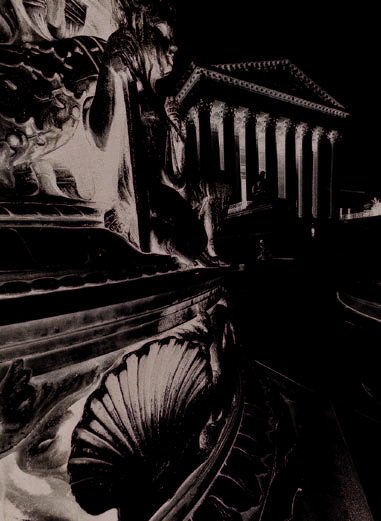
Statues guard the majestic façade of the U.S. Supreme Court, the highest court in the land. The words engraved on the lintel over the Greek pillars embody one of America’s founding principles: “Equal Justice Under Law.”
166
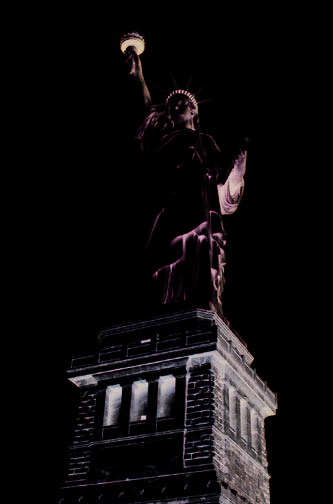
The Statue of Liberty, one of the United States’ most beloved monuments, stands 151
feet high at the entrance to New York harbor. A gift of friendship from the people of France to the United States, it was intended to be an impressive symbol of human liberty. It was certainly that for the millions of immigrants who came to the United States in the 19th and early 20th centuries, seeking freedom and a better life.
167
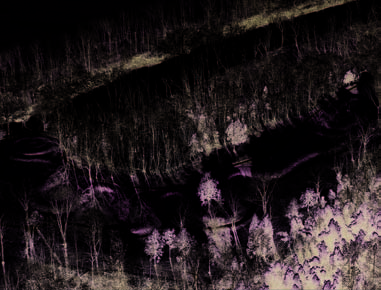
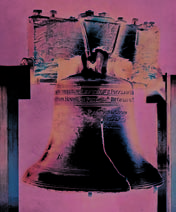
Aerial view of the Great Serpent Mound in Adams County, Ohio. Carbon
tests of the effigy revealed that the creators of this 1,330-foot monument were members of the Native-American Fort Ancient Culture (A.D. 1000-1550).
The Liberty Bell in
Philadelphia, Pennsylvania, an
enduring symbol of American
freedom. First rung on July
8, 1776, to celebrate the
adoption of the Declaration
of Independence, it cracked
in 1836 during the funeral of
John Marshall, Chief Justice
of the U.S. Supreme Court.
168
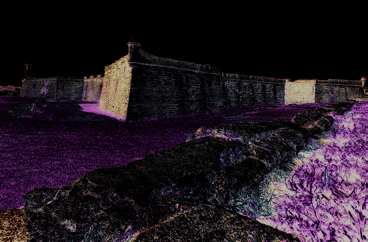
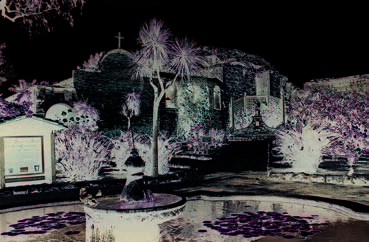
Two monuments to the central role Spain played in the exploration of what is now the United States. Top, the Castillo de San Marcos, built 1672-1695 to guard
St. Augustine, Florida, the first permanent European settlement in the continental United States. Above, fountain and mission remains of the San Juan Capistrano Mission, California, one of nine missions founded by Spanish Franciscan
missionaries led by Fray Junípero Serra in the 1770s. Serra led the Spanish
colonization of what is today the state of California.


170
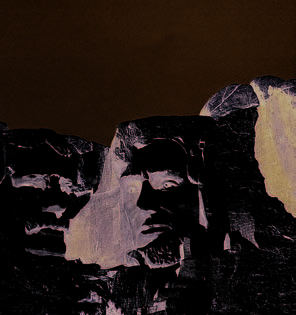

The faces of four of the most admired American presidents were
carved by Gutzon Borglum into the southeast face of Mount
Rushmore in South Dakota, beginning in 1927. From left to right,
they are: George Washington, commander of the Revolutionary
Army and first president of the young nation; Thomas Jefferson,
author of the Declaration of Independence; Theodore Roosevelt,
who led the country toward progressive reforms and a strong
foreign policy; and Abraham Lincoln, who led the country through
the Civil War and freed the slaves.
George Washington’s beloved home, Mount Vernon,
by the Potomac River in Virginia, where he died on
December 14, 1799, and is buried along with his wife
Martha. Among other treasured items owned by the
first president on display there, visitors can see one of
the keys to the Bastille, a gift to Washington from the
Marquis de Lafayette.
171

Six-year-old Mary Zheng straightens a flower placed at the Vietnam Veterans
Memorial in Washington, D.C., April 30, 2000. The names of more than 58,000
servicemen who died in the war or remain missing are etched on the “wall” part of the memorial, pictured here. This portion of the monument was designed by Maya Lin, then a student at Yale University.
172
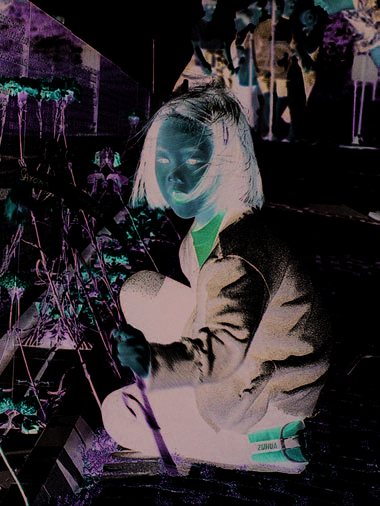
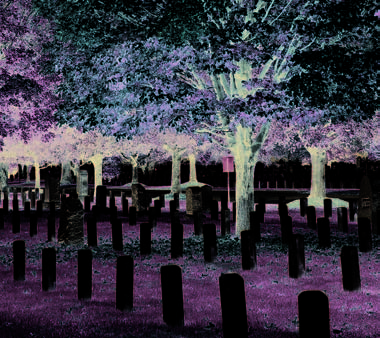
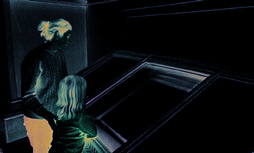
An autumnal view of Arlington Cemetery, Virginia, America’s largest and best-known national burial grounds. More than 260,000 people are buried at Arlington Cemetery, including veterans from all the nation’s wars.
A mother and daughter viewing documents in the Exhibition Hall
of the National Archives. The U.S. Constitution, the Declaration of
Independence, and the Bill of Rights are on display in this Washington,
D.C., building.

Fireworks celebrating the arrival of the Millennium illuminate two major
monuments in Washington, D.C., the Lincoln Memorial on the left and the
obelisk-shaped Washington Monument, center. The Lincoln Memorial’s north and
south side chambers contain carved inscriptions of his Second Inaugural Address and his Gettysburg Address. The tallest structure in the nation’s capital,
the Washington Monument was dedicated on February 21, 1885.
175
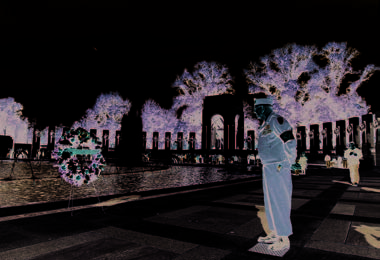
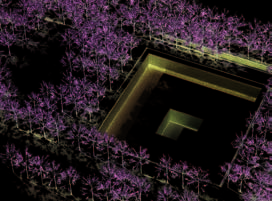
Top, the World War II Memorial, opened in 2004, is the most recent addition to the many national monuments in Washington, D.C. It honors the 16 million who
served in the armed forces of the United States, the more than 400,000 who died, and all who supported the war effort from home. Above, the planned design for the World Trade Center Memorial in New York City is depicted in this photograph of a model unveiled in late 2004. “Reflecting Absence” will preserve not only the memory of those who died in the terrorist attack of September 11, 2001, but the visible remnants of the buildings destroyed that morning, too.
176

OUTLINE OF U.S. HISTORY
machine, and the reaper-thresher or produced scores of new fruits and
combine . Mechanical planters, cut- vegetables; in Wisconsin, Stephen
ters, huskers, and shellers appeared, Babcock devised a test for determin-
as did cream separators, manure ing the butterfat content of milk; at
spreaders, potato planters, hay dri- Tuskegee Institute in Alabama, the
ers, poultry incubators, and a hun- African-American scientist George
dred other inventions .
Washington Carver found hundreds
Scarcely less important than of new uses for the peanut, sweet po-
machinery in the agricultural rev- tato, and soybean .
olution was science . In 1862 the
In varying degrees, the explosion
Morrill Land Grant College Act al- in agricultural science and technol-
lotted public land to each state for ogy affected farmers all over the
the establishment of agricultural world, raising yields, squeezing out
and industrial colleges . These were small producers, and driving migra-
to serve both as educational institu- tion to industrial cities . Railroads
tions and as centers for research in and steamships, moreover, began to
scientific farming . Congress subse- pull regional markets into one large
quently appropriated funds for the world market with prices instantly
creation of agricultural experiment communicated by trans-Atlantic ca-
stations throughout the country and ble as well as ground wires . Good
granted funds directly to the De- news for urban consumers, falling
partment of Agriculture for research agricultural prices threatened the
purposes . By the beginning of the livelihood of many American farm-
new century, scientists throughout ers and touched off a wave of agrar-
the United States were at work on a ian discontent .
wide variety of agricultural projects .
One of these scientists, Mark
THE DIVIDED SOUTH
Carleton, traveled for the Depart-
ment of Agriculture to Russia . There After Reconstruction, Southern
he found and exported to his home- leaders pushed hard to attract indus-
land the rust- and drought-resistant try . States offered large inducements
winter wheat that now accounts and cheap labor to investors to de-
for more than half the U .S . wheat velop the steel, lumber, tobacco, and
crop . Another scientist, Marion textile industries . Yet in 1900 the re-
Dorset, conquered the dreaded hog gion’s percentage of the nation’s in-
cholera, while still another, George dustrial base remained about what
Mohler, helped prevent hoof-and- it had been in 1860 . Moreover, the
mouth disease . From North Africa, price of this drive for industrializa-
one researcher brought back Kaf- tion was high: Disease and child
fir corn; from Turkestan, another labor proliferated in Southern mill
imported the yellow-flowering al- towns . Thirty years after the Civil
falfa . Luther Burbank in California War, the South was still poor, over-
177


























